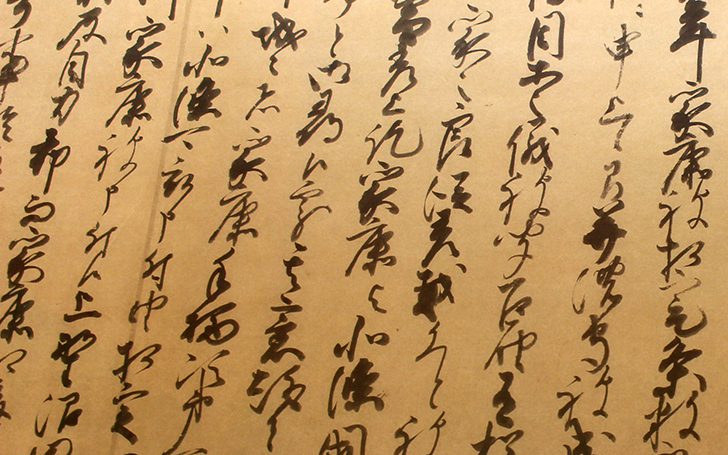39英語で説明したい日本2おせち料理

日本語訳載せときます。
おせち料理
おせち料理またはおせちは、お正月に出される伝統料理のことです。
おせちは御節供、中国から伝わった五つの節供の行事に由来します。
江戸時代に、五節句のうち新年を迎える最も重要な節句の料理が、正月料理となっていきます。
おせち料理にはまた、三が日に家事を休めるようにと作られた作り置き料理の役割もあります。
おせちを重箱に入れて重ねるのは、めでたいものを重ねる意味と、場所を取らないのでお客様に振る舞いやすい意味があります。
おせちに入れる料理には様々な意味があります。例えばニシンの子供のカズノコは子孫繁栄を願います。また黒豆は邪気を払い、まめに働ける願いが込められています。紅白の組み合わせはにほんではめでたいとされ、紅白の蒲鉾も入ります。
日本には様々な風習があります。例えば北海道では大晦日の夜におせち料理を食べる風習があり、関西には尾頭付きの鯛を三が日は食べず飾りにする風習があります。どうぞおせち料理を食べて下さい。
作ったタイピングゲームの一覧はこちらです。
https://typing.twi1.me/profile/userId/113751
あとブログのURLは下記に。関連記事と動画があるのでよろしければご覧下さい。英語ニュース以外もあります。
http://okakyutaro.blog.fc2.com/
関連タイピング
-
みんなで歴史の復習だ!
プレイ回数268218打 -
主人公ケイトによる物語です
プレイ回数3.4万長文かな1417打 -
意外と打てない英単語!このタイピングで強化しよう!
プレイ回数42万英字60秒 -
速ければ速いほど強い世界
プレイ回数791万短文かな87打 -
早ければ早いほど強い世界
プレイ回数33万短文英字26打 -
何秒で全部打てるか挑戦してみよう!
プレイ回数434万短文かな298打 -
TOEFLだけでなく、各種英語試験にも役立ちます。
プレイ回数8325英語長文523打 -
5分間の速度部門の模擬試験です。打つ速度で級が決まります
プレイ回数93万長文300秒
問題文
(Osechi)
Osechi
(Osechi cuisine or osechi is a traditional dish served on New Year's Day.)
Osechi cuisine or osechi is a traditional dish served on New Year's Day.
(Osechi originates from the five seasonal festivals introduced from China.)
Osechi originates from the five seasonal festivals introduced from China.
(During the Edo period, the most important of the five seasonal festivals)
During the Edo period, the most important of the five seasonal festivals
(to welcome the New Year became New Year's cuisine.)
to welcome the New Year became New Year's cuisine.
(Osechi cuisine also serves as a pre-made dish that is prepared)
Osechi cuisine also serves as a pre-made dish that is prepared
(so that household chores can be taken off on the first three days of the year.)
so that household chores can be taken off on the first three days of the year.
(Stacking osechi in a jubako has the meaning of stacking auspicious items)
Stacking osechi in a jubako has the meaning of stacking auspicious items
(and the meaning of being easy to treat to customers because it does not take up much space.)
and the meaning of being easy to treat to customers because it does not take up much space.
(The dishes in osechi have various meanings.)
The dishes in osechi have various meanings.
(For example, Kazunoko, a child of a herring, wishes for the prosperity of its descendants.)
For example, Kazunoko, a child of a herring, wishes for the prosperity of its descendants.
(In addition, black beans ward off evil spirits and have a wish to work diligently.)
In addition, black beans ward off evil spirits and have a wish to work diligently.
(The combination of red and white is considered auspicious in Japan,)
The combination of red and white is considered auspicious in Japan,
(and red and white kamaboko are also included.)
and red and white kamaboko are also included.
(Japan has various customs of eating osechi.)
Japan has various customs of eating osechi.
(For example, in Hokkaido, there is a custom of eating New Year's food on New Year's Eve,)
For example, in Hokkaido, there is a custom of eating New Year's food on New Year's Eve,
(and in Kansai, there is a custom of not eating sea bream with tails for the first three days for decoration.)
and in Kansai, there is a custom of not eating sea bream with tails for the first three days for decoration.
(Please enjoy osechi cuisine.)
Please enjoy osechi cuisine.








